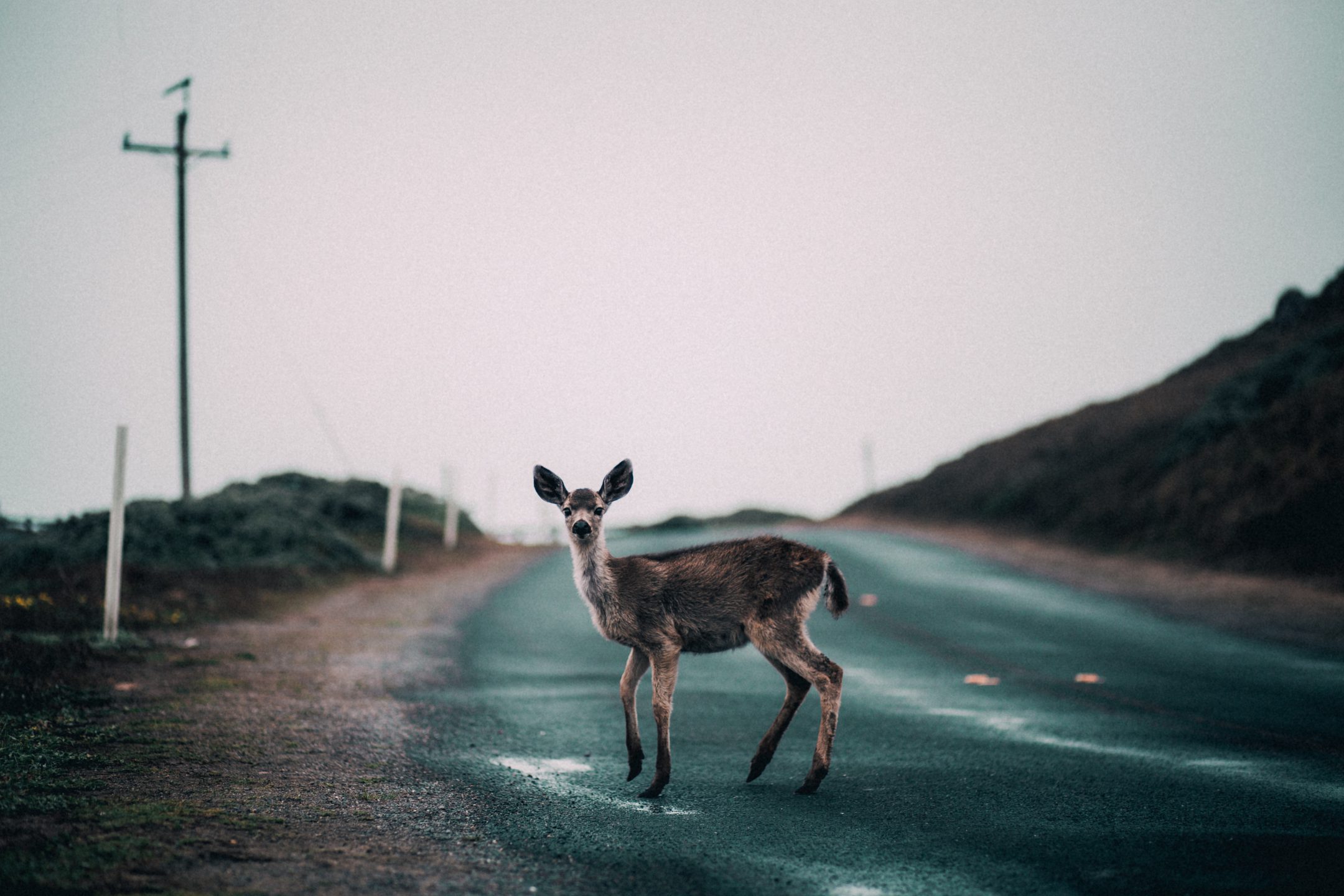In the Province of Alberta, there are over a thousand rural vehicle accidents involving wildlife, including moose, deer or fox, each month and this number doubles each November (over 2,600 accidents on rural Alberta roads).
Collisions with animals increase during the late fall due to mating season as wildlife are on the move in search of mates. Animals are drawn to roads due to an abundance of roadside vegetation, they are attracted to road salt, they are looking for mates, and the roads cut through their migration routes.
Although wildlife are active all day and all year round, research has found that most wildlife motor vehicle accidents occur between 7:00 p.m. and 11:00 p.m.
Animal-vehicle collisions represent approximately 50% of all reported vehicle accidents in Alberta on provincial rural highways. Every year in Alberta, six people die in highway accidents after motorists come into contact with wild animals and approximately 320 wildlife related motor vehicle accidents result in serious injuries.
WHAT TO DO IF YOU SEE WILDLIFE WHILE DRIVING
Although it is our natural inclination to swerve when encountering wildlife on the road, doing so may risk a more dangerous scenario, such as turning into oncoming traffic, hitting a tree, light post or a ditch.
It is recommended that if the animal is smaller than your car you should take your foot off of the gas and keep your vehicle on a straight course. Your vehicle may incur less damage when hitting an animal than if you were to hit another vehicle or a tree.
However, if you encounter a deer or moose on a roadway you want to try to avoid hitting these animals. A deer may respond to the noise from your horn or flashing lights. It is recommended that you stay on the road and maintain a strong grip on the steering wheel. No one wants to intentionally hit a moose or deer, but sometimes it is better to hit the animal than try to avoid it. Many motorists and passengers are injured when encountering a wild animal by trying to veer out of the lane and then hitting another vehicle or fixed object.
HOW TO MINIMIZE VEHICLE COLLISIONS WITH WILDLIFE
- Avoid throwing any garbage out of your window, which may attract wildlife.
- Be alert and slow down when driving at dusk or dawn when wildlife is most active.
- Slow down when you see wildlife near the road. Animals can be unpredictable and they sometimes travel in groups. It is recommended that you honk in a series of short bursts to encourage the animal to leave the area.
- Pay attention to posted wildlife warning signs.
- Be alert and keep a close watch. When driving in wooded areas, watch for deer in the ditches and along forest edges.
- Drive defensively and be prepared to take evasive action. Always drive so that you are able to stop within the space of your headlights. Also, be sure that you are wearing your seat belt and all passengers are wearing theirs.
- When driving through areas with heavy wildlife, it is recommended to situate your vehicle towards the inside of the lane, away from the side of the road. This will give you more reaction time if an animal is startled and darts onto the roadway.
- Use high beams when driving at night for best visibility.
- Keep your windshield and headlights clean for better visibility.
- Avoid distracted driving and pay close attention to your surroundings in order to avoid a collision.
WHAT TO DO IF YOU HIT WILDLIFE
If you do become involved in an accident with a wild animal, move your vehicle to a safe place and turn on your hazard lights to warn other drivers of the conditions. If you or your passengers have suffered injuries, call 911.
Do not approach the injured animal. A frightened or wounded animal may panic and could harm you. Call the local police if the animal is blocking traffic or creating a hazard for other drivers.
When it is safe to leave your car, take photographs of the road, your surroundings, any vehicle damage, and any injuries sustained. If witnesses stop, record their account of what occurred and ask for their contact information.
Also, call for a tow if your car is unsafe to drive. Check if your vehicle has suffered damage to its lights, or if there are any leaking fluids or anything that could make driving your vehicle dangerous.
Wildlife-related car accidents can be traumatic and life-changing, especially if you have suffered serious injuries, such as a head injury or spinal cord injury as a result of the accident. An experienced personal injury lawyer who is familiar with the relevant law and challenges of proving driver fault arising from a serious motor vehicle accident can help you understand your rights and the potential to recover compensation for your injuries. Please contact the award winning lawyers at Cuming & Gillespie LLP online or at 403-571-0555. Call our office for a free consultation to determine how we can help you following a motor vehicle accident.

